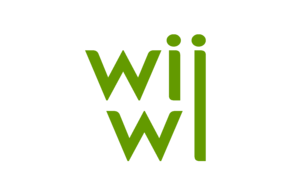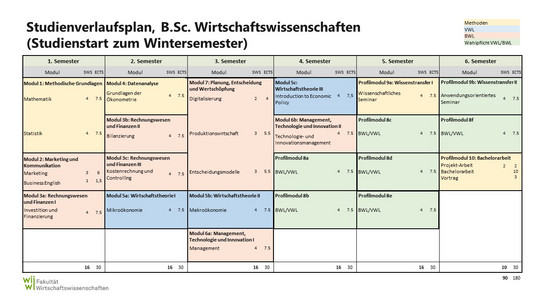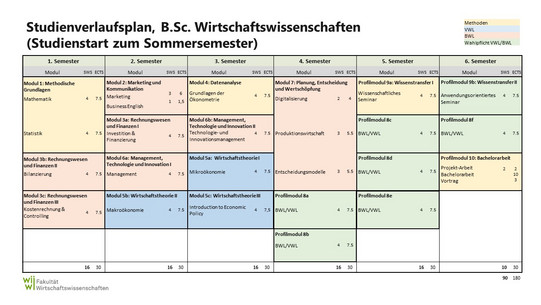Course of Studies
The bachelor's program is designed for six semesters and divided into 21 modules.
Basic Studies (Modules 1-7)
The first 12 modules are part of the basics phase of the study program. As part of the foundational courses, students learn the basics of all business and economics sub-areas of an economics degree course. In addition to traditional topics for mapping and explaining economic processes, current challenges (e.g. digitalization) and application-oriented issues are also addressed. In order to meet the requirements of an internationally recognized degree, proof of English language skills is also mandatory.
As a rule, students take courses worth 30 credits and 16 semester hours per week in each of the first three semesters. In the fourth semester, the final compulsory modules can then be completed for a total of 8 semester hours per week and 15 credits, together with other courses from the chosen competence profile.
Profile Studies (Modules 8-10)
As part of the profile study program, students acquire in-depth knowledge in special application areas through numerous elective options, including English-language options. Choosing one of the competence areas can sharpen students' professional profile as early as the Bachelor's degree course:
- Data, Decisions & Economic Policy
- Business Analytics & Operations Management
- Finance, Accounting, Controlling, Taxation
- Financial Markets & Financial Economics
- Global Management, Marketing, and Human Resources
- Technology, Entrepreneurship, and Digitalization
Six profile modules can be selected within the competence profile, two of which must be from business studies and two from economics. Seminars and Bachelor's theses are also firmly anchored within the profile. An overview of which professorships belong to which competence profile can be found at the end of the module handbook.
Study Plan
The order of the modules to be completed depends on whether you start your studies in the winter or summer semester; a more detailed overview of the modules can be found in the module handbook.










